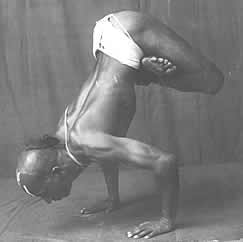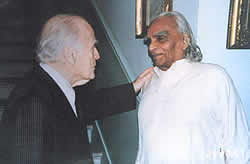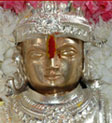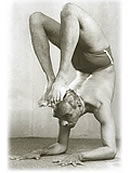What is Yoga? 
Yoga is one of the six systems of Indian philosophy.
The word "yoga" originates from the sanskrit root yuj
which means Union. On the spiritual plane, it means union of the
Individual Self with the Universal Self. Yoga is the union of
the body, mind, emotions and intellect.
Sage Patanjali penned down this subject in his treatise known
as Yoga Sutras of Patanjali.
What is the relevance of
yoga in today's world? 
The practice of Iyengar yoga helps anyone to gain
good health, mental
peace, emotional equanimity and intellectual clarity.
With a healthy
body, clear mind and pure emotions, the practitioner can learn
to excel in his chosen career.
For example, violin maestro Lord
Yehudi Menuhin acknowledges Guruji as his Best violin teacher.
What are the different stages/aspects
of Patanjali's Yoga ?
Sage
Patanjali's exposition consists of just 196 terse yoga sutras
which cover  all aspects of life, which are:
all aspects of life, which are:
a.Samadhi Pada (51 Sutras)
b. Sadhana Pada (55 Sutras)
c. Vibhuti Pada (56 Sutras)
d. Kaivalya Pada (34 Sutras)
---------------------------
The eight aspects (astanga) of
yoga are :
1.Yama : Depicts of moral and social
conduct.
These are a)Ahimsa, b)Satya, c)Astya, d)Bramhacharya and e)Aprigraha
2.Niyama : Depicts disciplinary conduct.
These are a)Shaucha, b)Santosha, c)Tapas, d)Swadhyaya and e)Ishvarapranidhana 
3.Asanas : Adjust the body in various postures
4.Pranayama : Regulation of breath
5.Pratyahara : Internalization of the senses of perception
6.Dharana : Concentration
7.Dhyana : Meditation
8.Samadhi : The ultimate state of self realization.
These are a)Samprajnata Samadhi (conscious) and b)Asamprajnata Samadhi (supraconscious)
What are the unique features
of "Iyengar Yoga"? 
Listed are few of the important features of Iyengar Yoga:
Iyengar Yoga can be practiced by all.
The emphasis is given to precision and alignment
in all postures.
The use of self designed props such as wooden
gadgets, belts, ropes helps the practitioner to achieve perfection
in all the postures.
The aspect of "sequencing". An "Iyengar Yoga"
practitioner is aware of the sequence in which different groups
of asanas have to be performed.









 5th century B.C.
5th century B.C. 